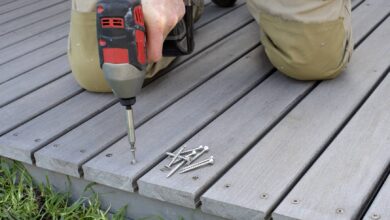Common Hedge Care Mistakes and How to Avoid Them
Caring for hedges might seem straightforward, but many gardeners, both novice and experienced, can fall into common pitfalls. These mistakes can not only affect the aesthetic appeal of your garden but also the health and longevity of your hedges. This article will outline some of the most common hedge care mistakes and provide expert tips on how to avoid them. By understanding these errors and learning how to prevent them, you can ensure that your hedges thrive and contribute beautifully to your garden’s landscape.
1. Incorrect Pruning Techniques
One of the most frequent hedge care mistakes is improper pruning. Pruning is essential for maintaining the shape and health of your hedges, but doing it incorrectly can cause significant damage.
How to Avoid It:
- Prune at the Right Time: Different hedge species require pruning at different times of the year. Research the specific needs of your hedge type.
- Use the Right Tools: Ensure your pruning tools are sharp and appropriate for the task. Dull tools can cause ragged cuts that increase the risk of disease.
- Avoid Over-Pruning: Over-pruning can weaken the hedge and make it susceptible to pests and diseases. Trim only the necessary growth to maintain shape and health.
2. Ignoring Soil and Nutrient Needs
Hedges, like all plants, require specific soil conditions and nutrients to thrive. Ignoring these needs can lead to poor growth and health issues.
How to Avoid It:
- Test Your Soil: Conduct a soil test to understand its pH level and nutrient content. Adjust the soil composition as needed for your hedge species.
- Fertilize Appropriately: Use a balanced fertilizer to provide essential nutrients. Be mindful of the specific requirements of your hedge species.
- Mulch Regularly: Applying mulch around the base of your hedges helps retain moisture, regulate soil temperature, and provide nutrients as it decomposes.
3. Incorrect Watering Practices
Both over-watering and under-watering can be detrimental to your hedges. Finding the right balance is crucial for optimal hedge care.
How to Avoid It:
- Understand Water Requirements: Different hedges have different water needs. Research your specific hedge type to know how much water it requires.
- Water Deeply and Infrequently: Deep watering encourages roots to grow deeper into the soil, making the hedge more resilient. Water less frequently but thoroughly.
- Check Soil Moisture: Use a soil moisture meter or simply check the soil with your fingers. Ensure the soil is moist but not waterlogged.
4. Neglecting Pest and Disease Control
Pests and diseases can quickly undermine the health of your hedges if not promptly addressed.
How to Avoid It:
- Regular Inspections: Regularly inspect your hedges for signs of pests and diseases. Early detection is key to effective treatment.
- Use Natural Predators: Encourage natural predators like birds and beneficial insects to keep pest populations in check.
- Apply Treatments Judiciously: If chemical treatments are necessary, use them sparingly and follow the instructions carefully to avoid harming the hedge or the environment.
5. Planting Hedges Too Close Together
Another common hedge care mistake is planting hedges too close together. This can lead to competition for nutrients and water, poor air circulation, and increased susceptibility to disease.
How to Avoid It:
- Follow Spacing Guidelines: Research the mature size of your hedge species and plant them accordingly. Adequate spacing ensures healthy growth and air circulation.
- Plan for Growth: Consider the future growth of your hedges when planting. Give them enough space to spread out without overcrowding.
6. Ignoring Light Requirements
Hedges have specific light requirements that must be met for optimal growth. Ignoring these needs can result in weak, leggy plants.
How to Avoid It:
- Know Your Plant’s Needs: Some hedges thrive in full sun, while others prefer partial shade. Make sure you understand the light requirements of your hedge species.
- Position Accordingly: Plant your hedges in areas where they will receive the appropriate amount of sunlight. Avoid placing sun-loving hedges in shaded areas and vice versa.
7. Improper Use of Expert Tree Care Services
Many homeowners hesitate to use professional services, thinking they can manage hedge care on their own. While DIY efforts are admirable, sometimes expert intervention is necessary.
How to Avoid It:
- Know When to Call Experts: Recognize situations where professional help is needed, such as dealing with severe pest infestations, diseases, or extensive pruning tasks.
- Hire Qualified Services: Look for reputable expert tree care services with experience in hedge maintenance. Professional services can provide specialized care that ensures the health and longevity of your hedges.
8. Failing to Maintain Hedge Shape
Hedges require regular shaping to maintain their aesthetic appeal and structural integrity. Neglecting this aspect can lead to an untidy appearance and weak growth.
How to Avoid It:
- Regular Trimming: Schedule regular trimming sessions to maintain the desired shape and size of your hedges. This prevents overgrowth and encourages healthy development.
- Use Guidelines: Use string or stakes as guides to ensure straight, even cuts. This helps in achieving a neat and professional look.
9. Lack of Seasonal Care
Different seasons bring different challenges for hedge care. Ignoring seasonal requirements can affect the health and appearance of your hedges.
How to Avoid It:
- Adapt Care Routines: Adjust your hedge care routine according to the season. For example, provide extra water during dry spells and protect from frost in winter.
- Seasonal Pruning: Perform specific pruning tasks at the appropriate times of the year to encourage healthy growth and flowering.
10. Not Keeping Up with Maintenance
Hedge care is an ongoing process. Failing to keep up with regular maintenance can lead to long-term problems that are difficult to correct.
How to Avoid It:
- Create a Maintenance Schedule: Develop a routine maintenance schedule that includes watering, pruning, fertilizing, and inspecting for pests and diseases.
- Stay Consistent: Stick to your maintenance schedule consistently to ensure your hedges remain healthy and attractive.
Conclusion
Proper hedge care is essential for maintaining a beautiful and healthy garden. By avoiding common mistakes such as incorrect pruning techniques, neglecting soil and water needs, and failing to use expert tree care services when necessary, you can ensure your hedges thrive. Remember to adjust your care practices based on the specific needs of your hedge species and the changing seasons. With diligent attention and regular maintenance, your hedges will continue to be a stunning and valuable part of your landscape.



